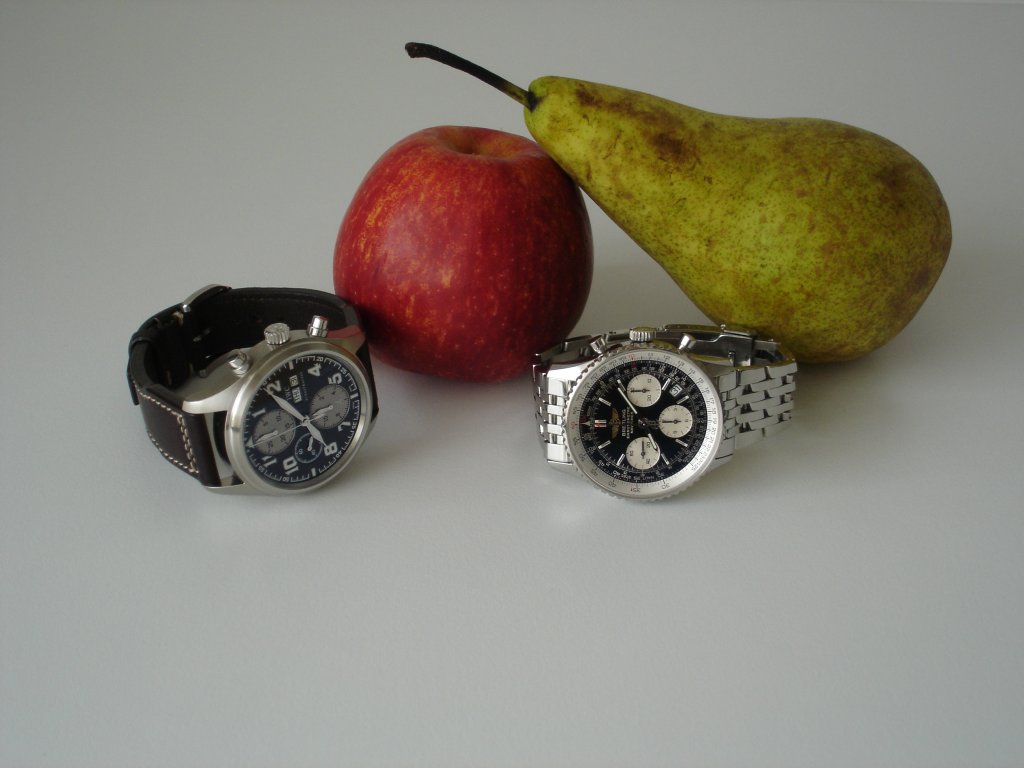
The objects I compare are my Breitling Navitimer and my IWC St Exupéry Chrono. You decide which one is apple or pear, I love fruit!
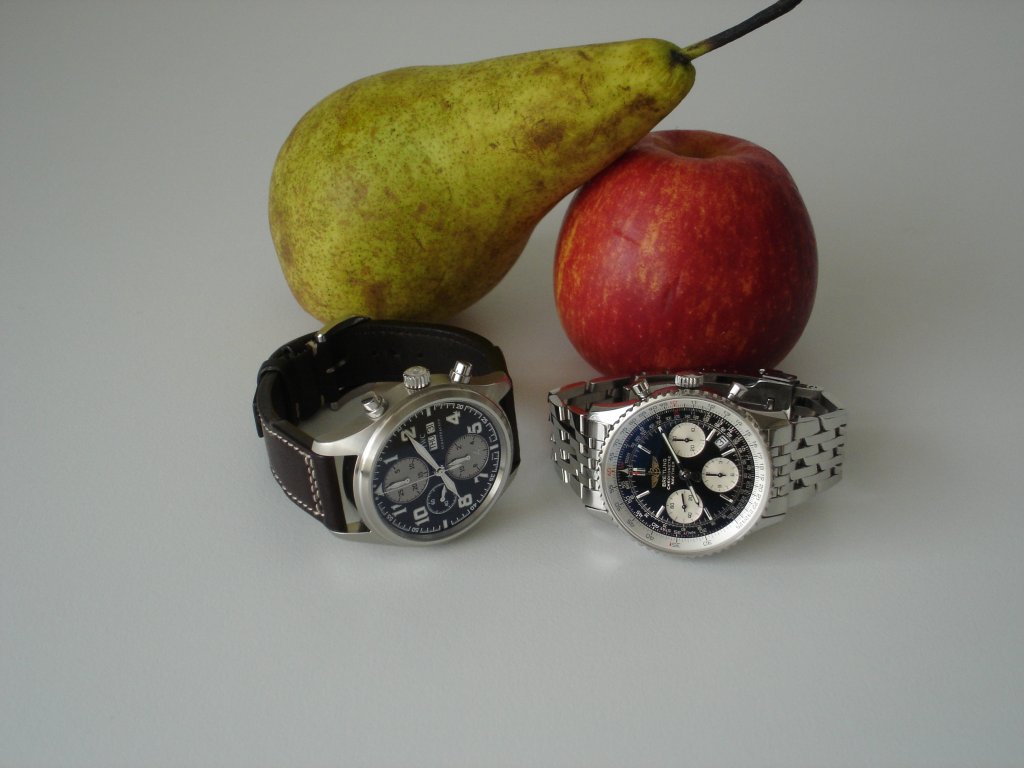
First, some similarities:
- Both are based on a Valjoux 7750 movement, automatic winding with about 42 hours of power reserve
- Both have the movement modified by the manufacturer
- Both have a chrono, allowing timings of up to twelve hours and with an accuracy of 1/4 of a second
- Both are running very accurate and deviate less than a second per day
- Both are stainless steel
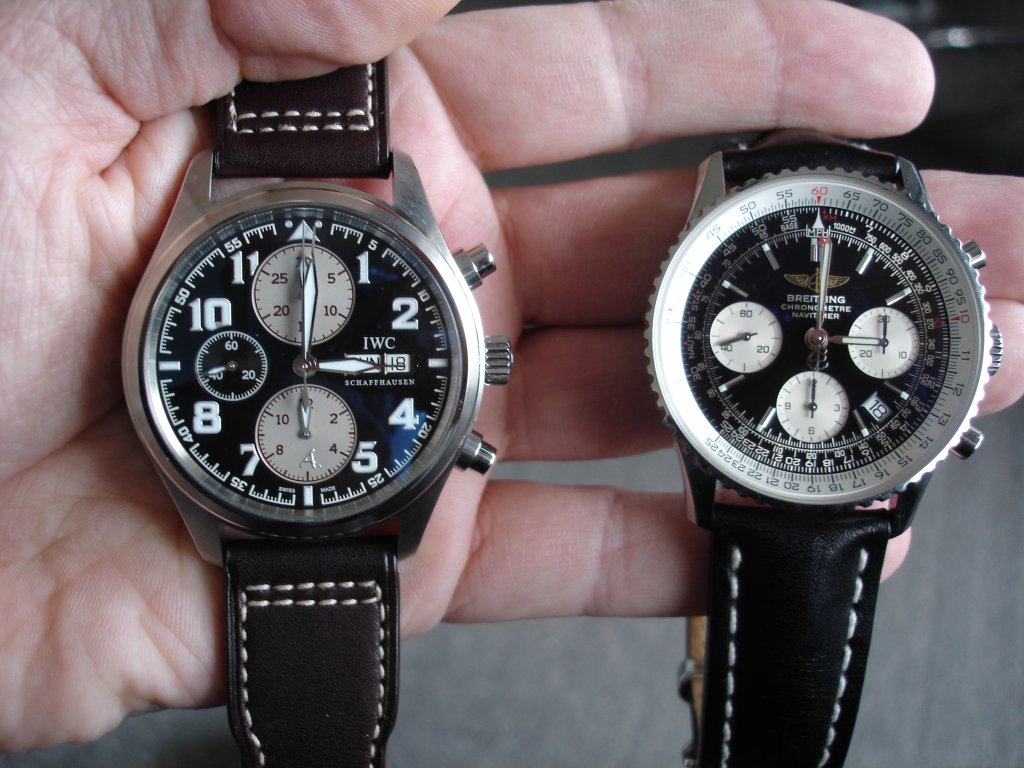
Now some differences:
The diameter of the St Exupéry Chrono is 42 mm, the Navitimer measures 41.80 mm but the Navitimer looks a bit smaller. This is probably because of the white sliderule ring and the form of the lugs. The St Exupéry Chrono is one tenth of a mm thicker (14.70 mm) but that's not noticable. It also features a soft iron innner case to protect the watch against magnetic fields.
Breitling has changed the layout of the subdials to the so-called 'tri-compax' layout. This has several other consequenses: the quick-set date function has been sacrificed and the date window has been moved from 3 to between four and five. There is no day display either. The numbers 1 to 9 for the days are displayed perpendicular to the central axis of the watch, the numbers 10 to 31 are rotated 90 degrees. This way, the numbers 1 to 9 are a bit bigger and allow for better use of the space of the date-window.
IWC has kept the layout of the subdials as it was originally on the Valjoux 7750 with the quick-set date function and the day too. IWC does other modifications to the movement which make it run smoother and allow for a weaker main spring to be used. This reduces internal forces on all components of the movement.
Breitling has added a sliderule. If you learn a few basic tricks, multiplication and division are easy operations. The water resistance does suffer from the sliderule and is only 3 bar.
The St Exupéry Chrono has a better water resistance rating of 6 bar but the watch looks best on a strap and I won't go swimming with a strap. It does have a screw-in crown.
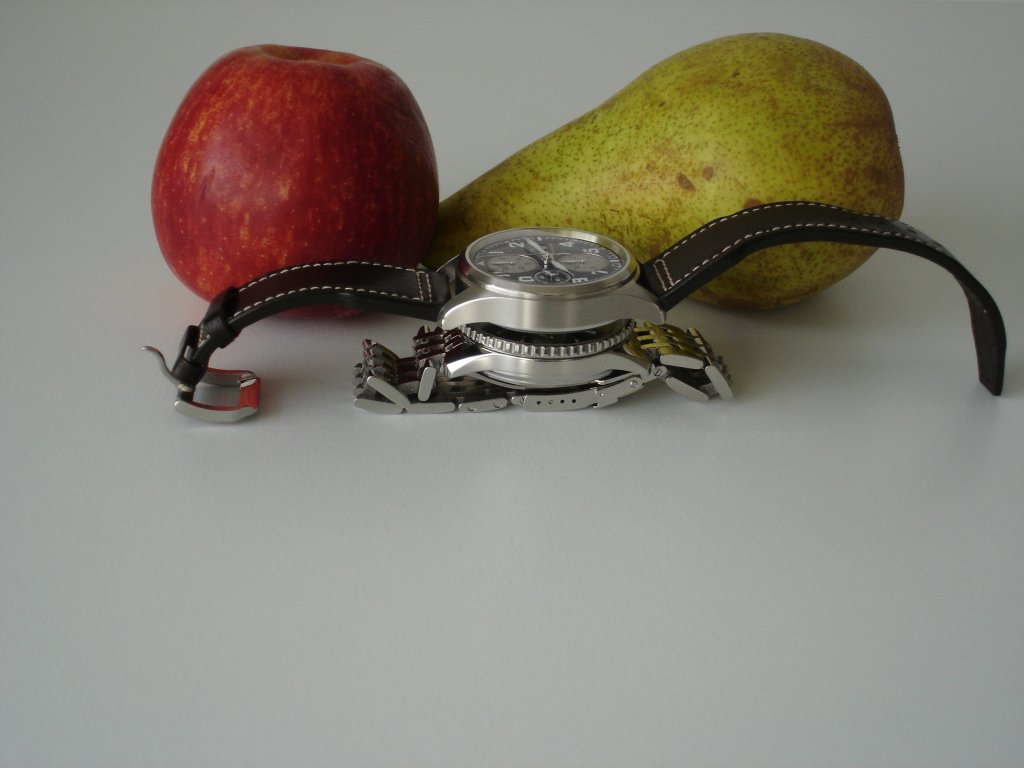
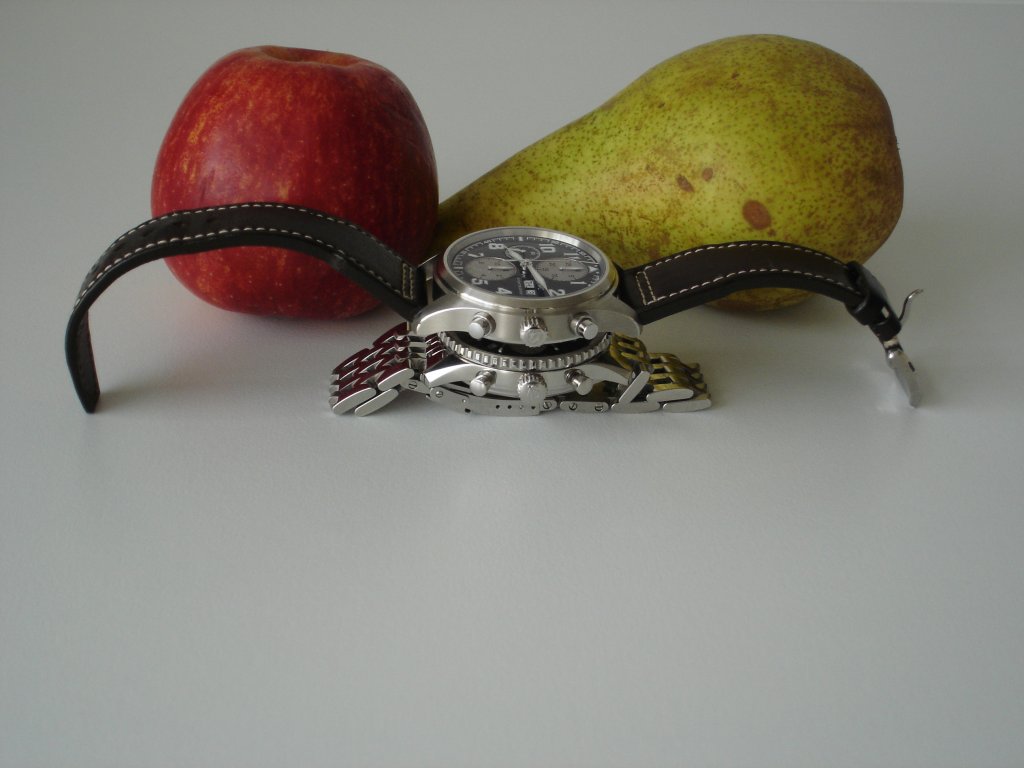
The engravings on the back of the Navitimer allow the user to convert degrees Celcius to degrees Farenheit and the other way around.
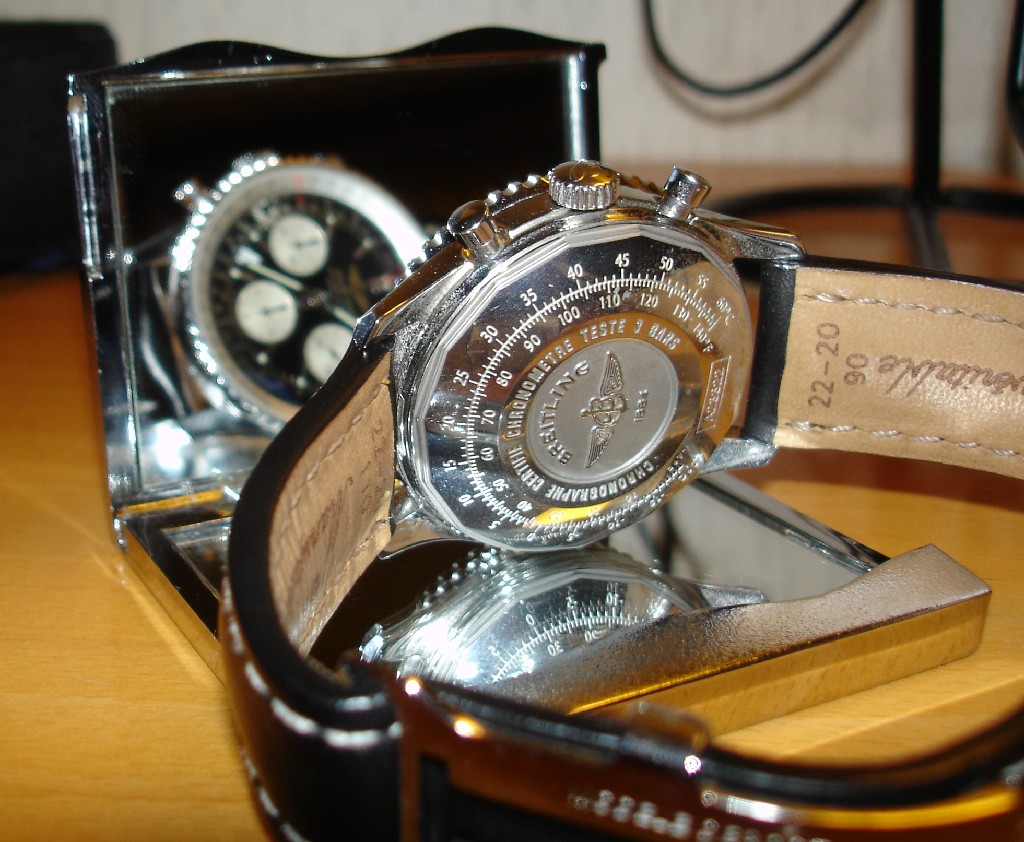
The back of the St Exupéry Chrono shows a portrait of St Exupéry and that it's a limited edition with the number (1630 were made in the steel version).
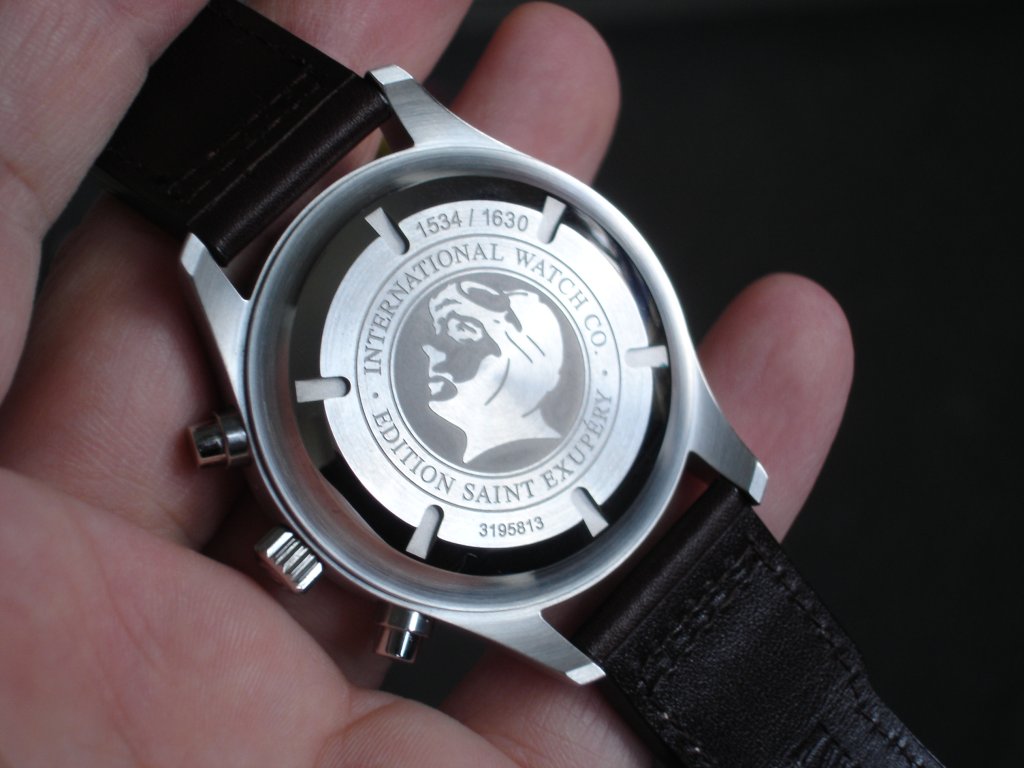
The lugs of the Navitimer are shorter and thinner, thus having a smaller gap between the strap and the case. The case of the ST Exupéry Chrono is mainly brushed with a few polished parts such as the outer rim of the bezel and the edges of the lugs.
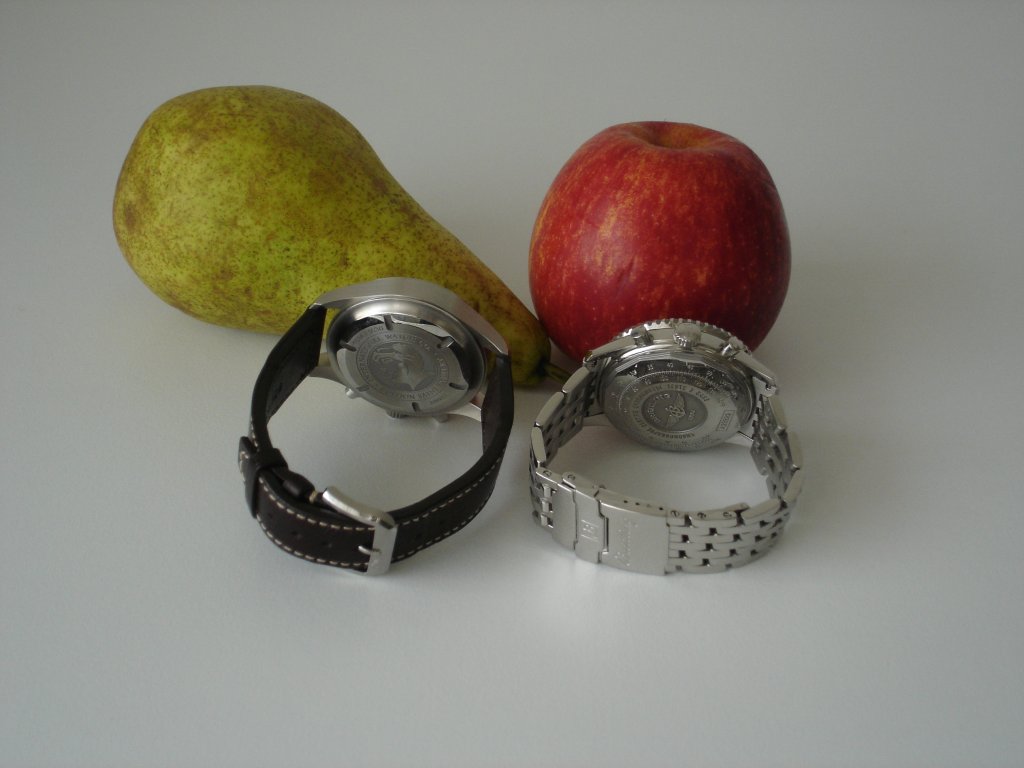
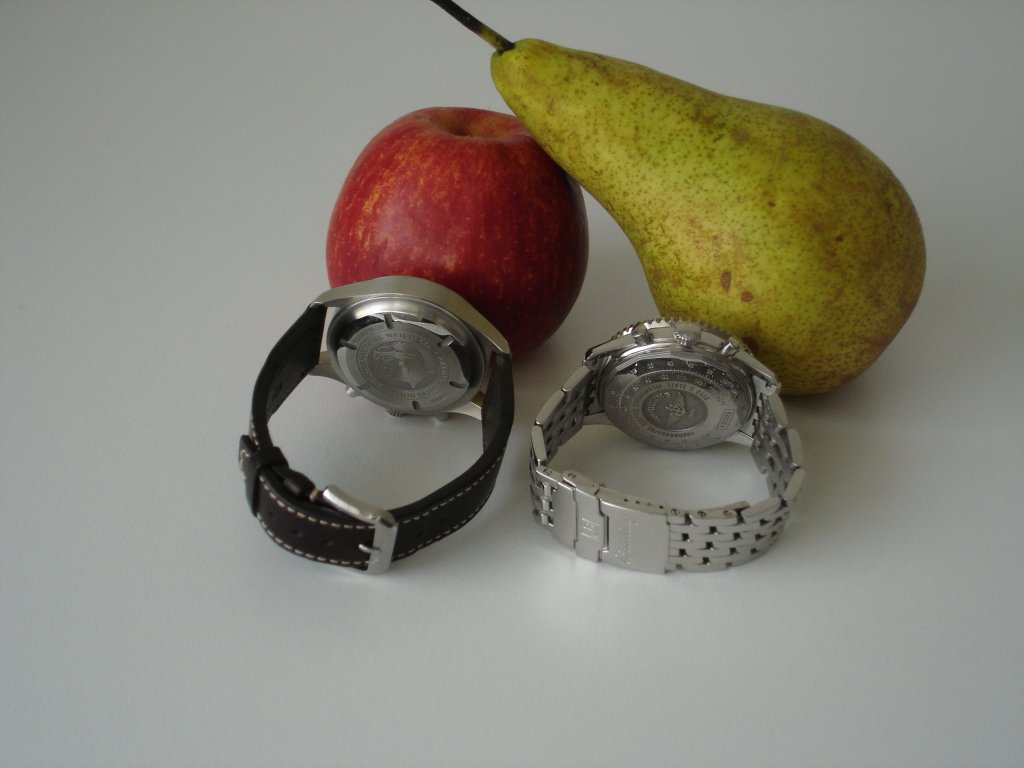
The crown of the Navitimer is not screwed down. This is not necessary because the weakest point in the water resistance equation is the slide rule dial.
The dial of the Navitimer is considered 'cluttered' by some but all markings are usefull and the chronograph can be accurately read all around the dial. It also has a tachymeter scale and the markings for the sliderule. The sliderule has some red elements that allow for quick conversions between landmiles, nautical miles and kilometers. The starting-point at 10 is also indicated in red. The dial of my Navitimer has the Baton markers but a version with arabics is available too. SuperLuminova is applied to the hour- and minute hands and to the tips of the applied Baton markers at 12 (a double), 1, 2, 4, 5, 7, 8, 10 and 11. The SuperLuminova on the Navitimer is charged very quickly and even though the dots on the dial are small, it's easy to read the time in the dark.
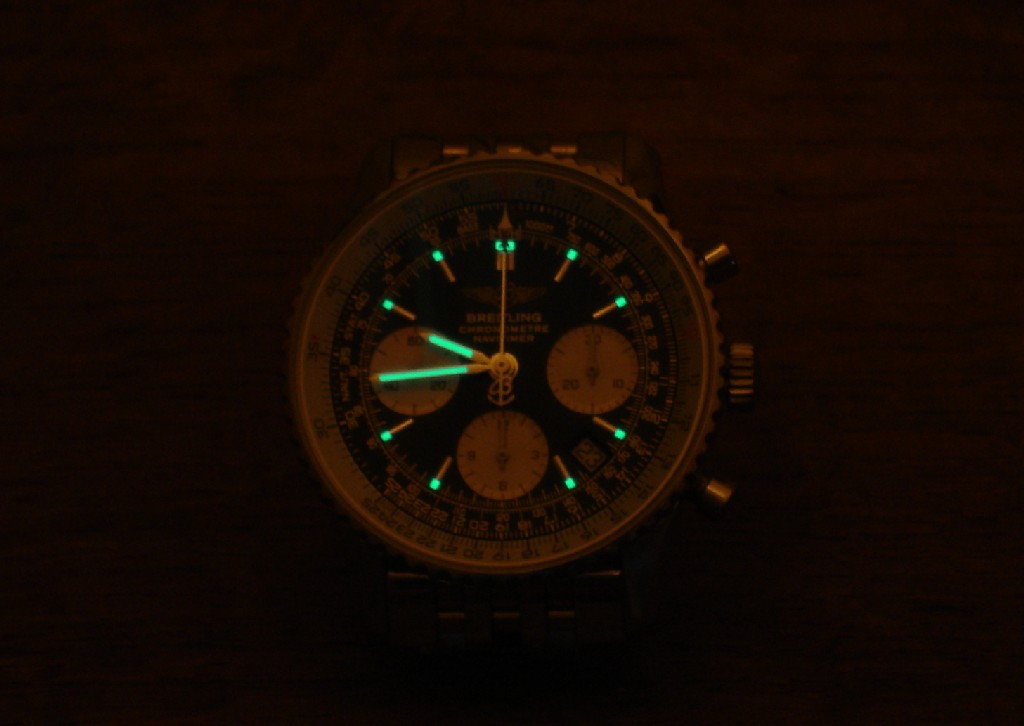
The dial of the St Exupéry has big arabics at 1, 2, 4, 5, 7, 8, 10 and 11. Some are cut off a bit. The running second subdial is smaller and of the same color as the main part of the dial. SuperLuminova with a beautiful blue color is applied to all the arabics, the markers at 12, 3, 6 and 9 and to all the hands except for the chrono second hand. The SuperLuminova on the St Exupéry needs a bit more light to charge but it keeps glowing as good as the Navitimer and because of the big numerals and the SuperLuminova on almost all hands, it's a pleasure to read the time in the dark.
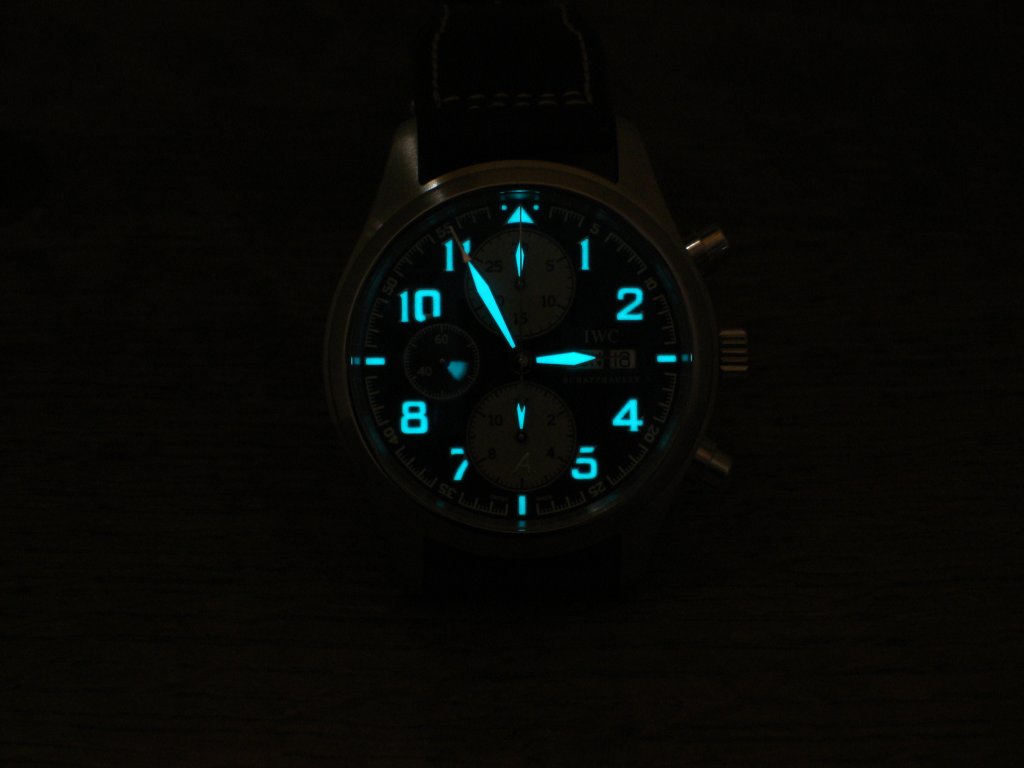
The two chrono subdials are grey and the idea of this design was to have them look like spinning propellors. At the 5 minute marks at 5, 10, 20, 25, 35, 40, 50 and 55 have these numbers dislpayed. Unfortunately, there are no sub-second indications there so it is harder to really accurately read the chronograph.
The dial of the St Exupéry Chrono has a very special brown color that changes with the lighting. With the right light, a very nice 'sunray' effect appears.
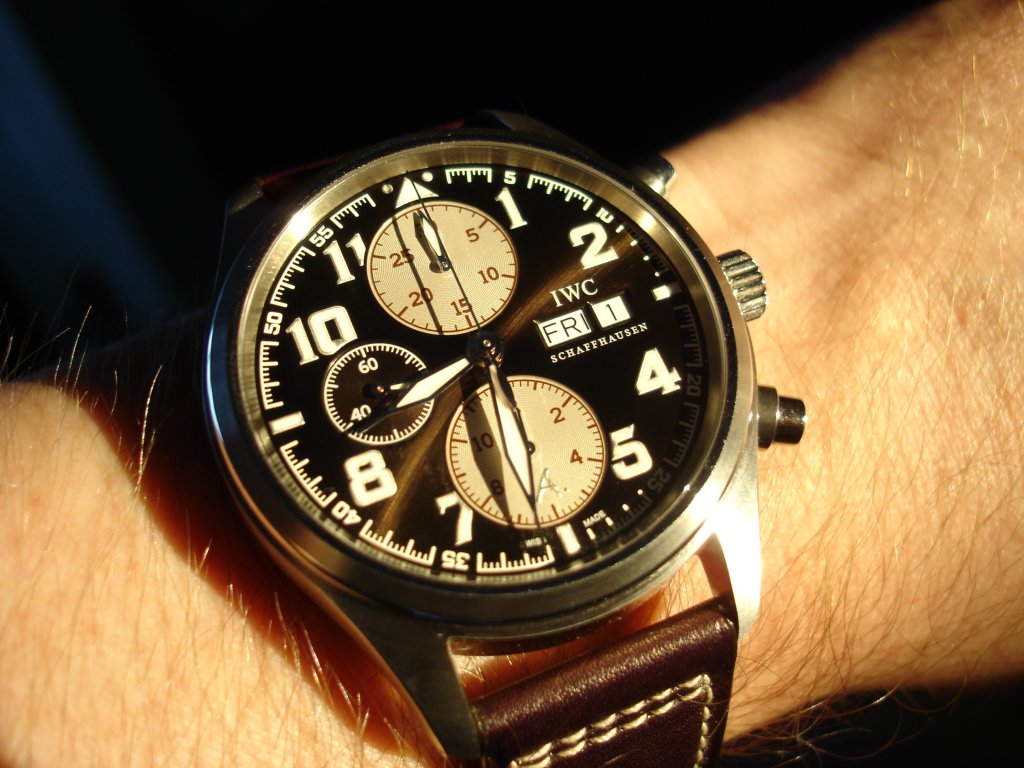
Both watches have anti-reflective coating on in- and outside of the sapphire crystal that allow for easy reading of the time under any angle. There is however a big difference when taking pictures: the Breitling suffers much less from reflections and allows for pictures of the dial at very sharp angles.
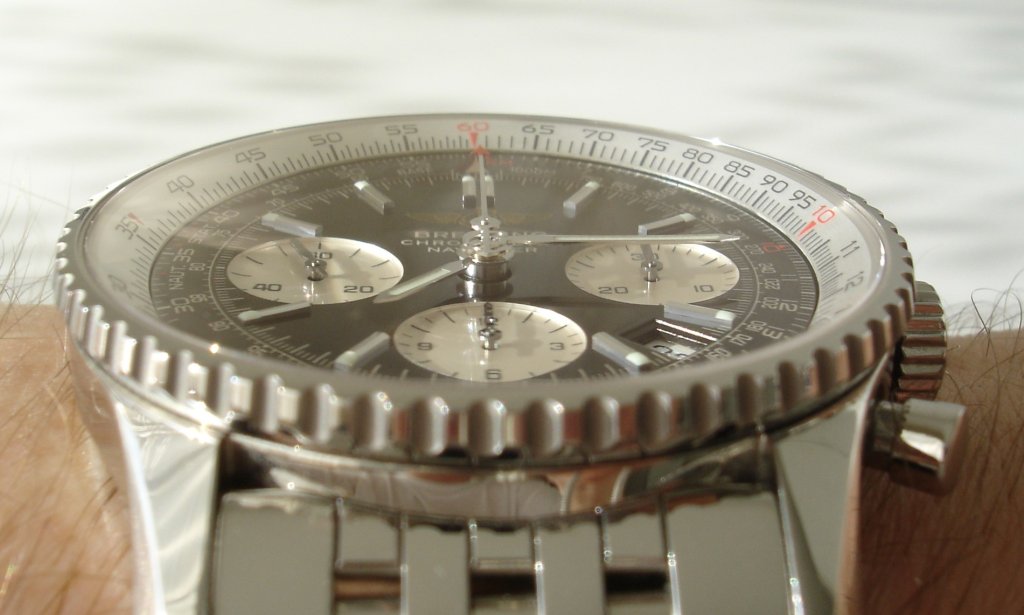
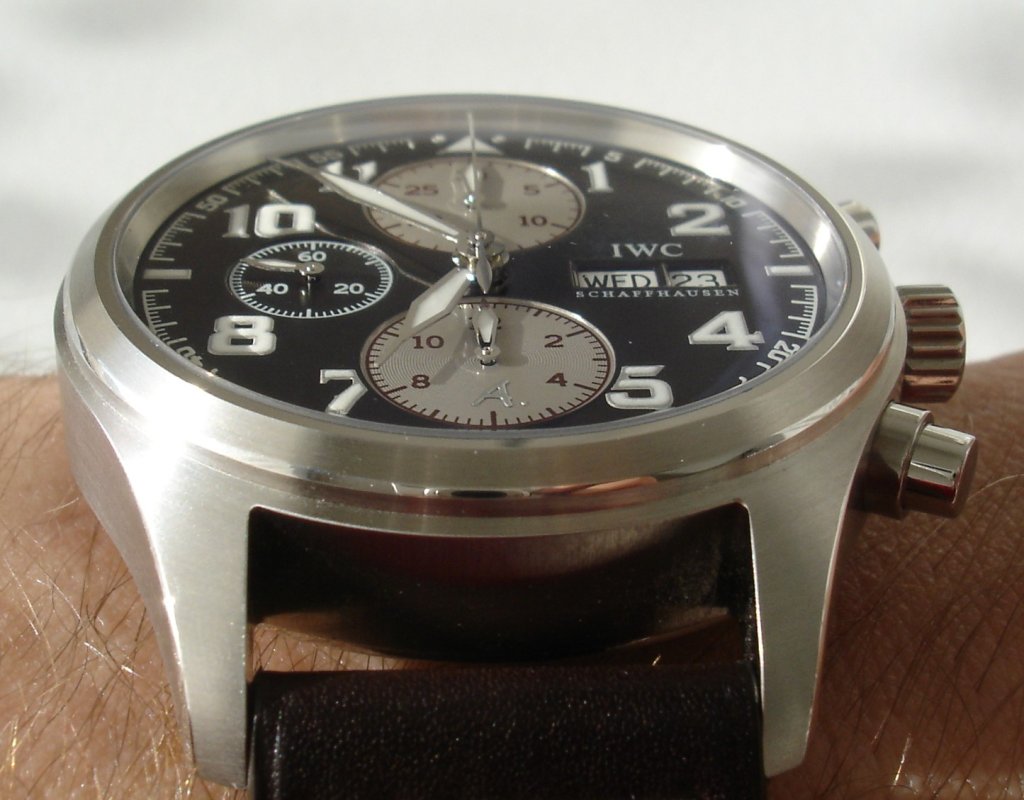
The bracelet of the Navitimer is very comfortable. The Navitimer does look very good on a strap too. Breitling has a great deployant clasp for their straps that allows for fine adjustments and it doesn't use holes in the strap. It is a bit less comfortable than a strap with a buckle though. The bracelet has micro adjustments. Adding or removing links is a job that takes some time and patience.
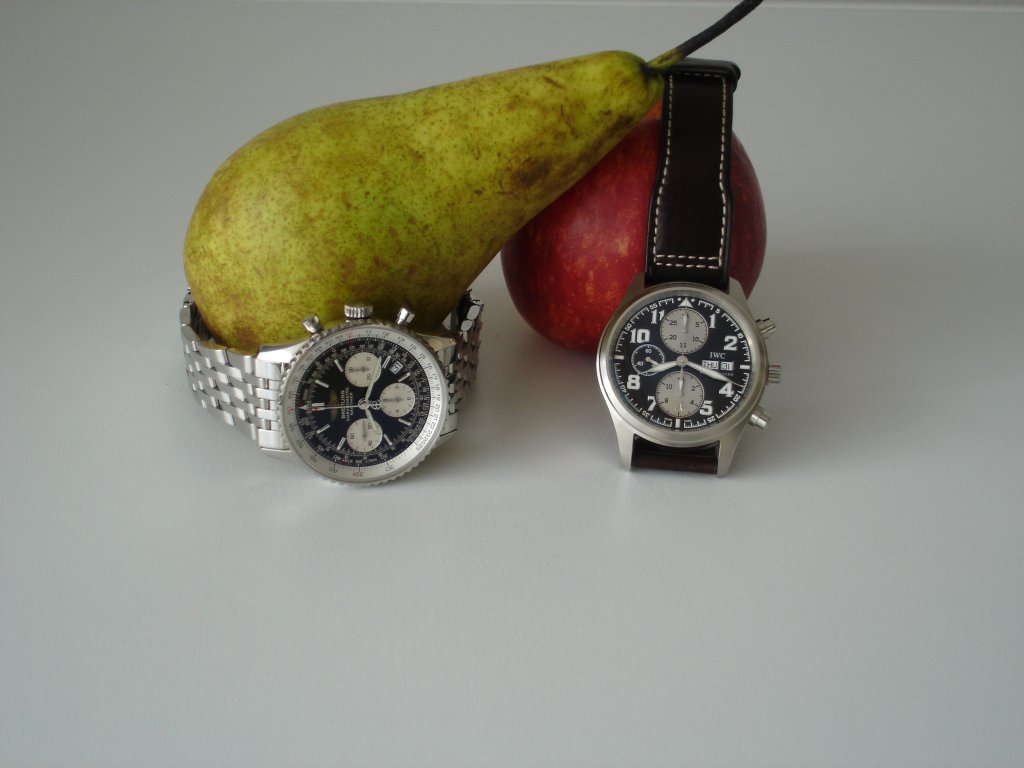
The St Exupéry Chrono comes with a strap and buckle. At first, it felt a bit thin, compared to the Breitling straps I have but it is very comfortable. Other people have tried the IWC steel bracelet on the St Exupéry Chrono but it doesn't look right. The Havana dial cries for the brown strap!
The Navitimer is 'the' icon watch from Breitling. It is not a rare watch but that doesn't bother me. The St Exupéry Chrono is a limited edition model from 2006 and it was quickly sold out. I had to wait about 5 months to get mine and I am very happy that my jeweler was able to get me one. Both watches are worn regularly but I wear the IWC a bit more often than the Navitimer.
Well, that's it for now. I hope you like this little comparison and make sure you get your daily portion of Vitamins!